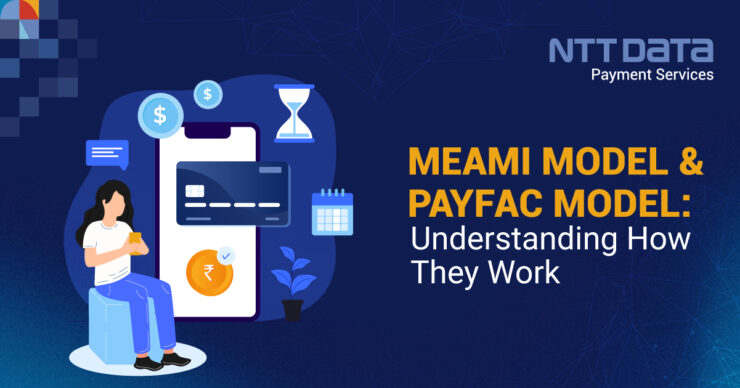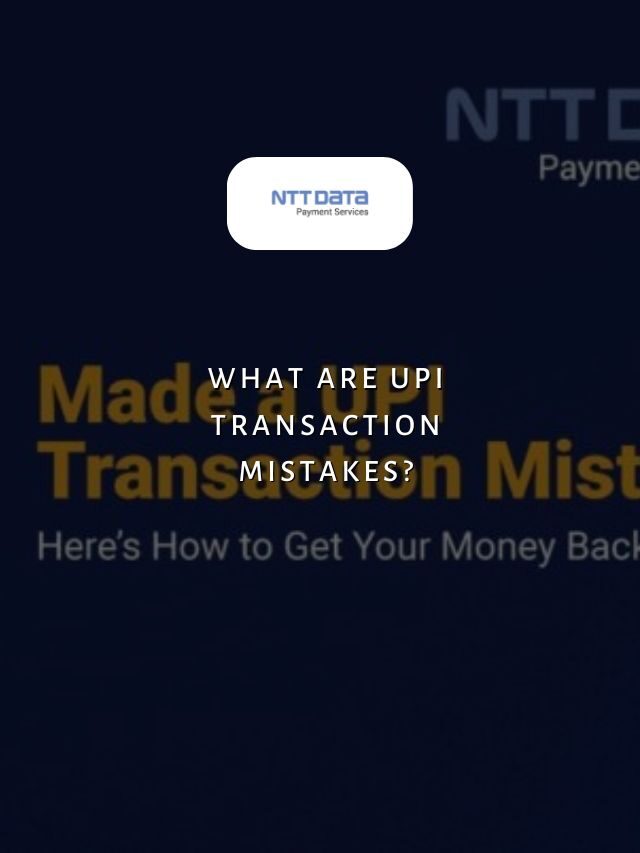
Table of Contents
- 1 Discover MEAMI Model & PayFac Model
- 2 What is MEAMI Model?
- 3 Recent Web Stories
- 4 What is PayFac Model?
- 5 Working of MEAMI Model
- 6 Working of PayFac model
- 7 Upgrade Your Payment Models With NTT DATA Payment Services
- 8 Differences Between MEAMI Model and PayFac Model
- 9 MEAMI & PayFac Models Explained
- 10 FAQs
The MEAMI model and the PayFac model are two innovative payment processing approaches that have transformed how businesses handle transactions. Understanding these models’ functionalities, benefits, and challenges is crucial for businesses to make informed decisions about their payment strategies in the digital era.
In this blog post, let’s delve into the MEAMI model and PayFac models, exploring how they operate and their significance in today’s digital economy.
Discover MEAMI Model & PayFac Model
In today’s financial services and online transactions, two models have gained prominence: the MEAMI (Marketplace, Escrow, Aggregator, Marketplace, Issuer) model and the PayFac (Payment Facilitator) model.
These models are crucial in facilitating seamless payment processing for businesses and consumers alike.
What is MEAMI Model?
MEAMI Model stands for Merchant Acquirer, Issuer, and Merchant Integration Model. It is a comprehensive approach to payment processing that involves the collaboration of a merchant (business or individual), an acquirer (merchant bank), and an issuer (the bank that issued the card to the customer).
This model ensures the validation, authorisation, and settlement of credit and debit card payments, providing businesses with a secure and widely accepted infrastructure.
It consists of four primary components.
- Marketplace
- Escrow
- Aggregator
- Issuer
Recent Web Stories
What is PayFac Model?
The PayFac Model, or the Payment Facilitator Model, is a payment processing approach allowing businesses to act as payment facilitators. In this model, businesses streamline the onboarding process for sub-merchants, handle underwriting and risk management, and provide a unified payment experience.
- It simplifies payment processing, reduces administrative burdens, and enables quick and easy merchant onboarding, making it particularly appealing for digital businesses and online platforms.
- It eliminates the need for sub-merchants to establish their own merchant accounts, significantly reducing the time and effort required for setup.
There are a lot of benefits when you choose to become a payment facilitator.
Working of MEAMI Model
The MEAMI Model represents a comprehensive approach to payment processing, encompassing three key entities: the merchant, the acquirer, and the issuer.
1. Customer Initiates Payment: A customer initiates a payment by using a credit or debit card at the merchant’s point of sale (POS) or through an online payment gateway.
2. Authorisation Request: The payment gateway securely transmits the payment details to the acquirer for authorisation. The acquirer, in turn, forwards the request to the issuer for verification.
3. Authorisation Response: The issuer checks the customer’s account for sufficient funds and returns an authorisation response to the acquirer.
4. Settlement: If the transaction is authorised, the acquirer transfers the funds to the merchant’s account after deducting the necessary fees.
5. Clearing and Funding: The acquirer sends the transaction details to the card networks, which initiate the clearing process. The funds are then transferred from the issuer to the acquirer, who subsequently settles the funds with the merchant.
We need to remember that there is a difference between a payment gateway and a merchant account. While choosing to be a PayFac or MEAMI.
Working of PayFac model
The PayFac Model is a more recent and disruptive concept in the payments space. It simplifies payment processing by allowing businesses to act as payment facilitators themselves, streamlining the onboarding process and reducing the barriers to entry for new merchants.
1. Merchant Onboarding: The payment facilitator onboards sub-merchants through a simplified and expedited process, often leveraging technology and automation to streamline the application and underwriting procedures.
2. Aggregation: The payment facilitator aggregates the transactions from all sub-merchants and routes them through their payment infrastructure.
3. Risk Management: PayFac assumes the responsibility of managing risk and fraud for all the sub-merchants. This includes monitoring transactions, implementing security measures, and taking necessary actions to protect against fraudulent activities.
4. Settlement: Once the payment facilitator receives the funds from the customers, they deduct their fees and transfer the remaining amount to the sub-merchant accounts.
5. Reporting and Analytics: Payment facilitators often provide sub-merchants with reporting tools and analytics to monitor transaction data, sales trends, and other valuable insights.
You can choose to become a PayFac by submitting the required KYC details.
Upgrade Your Payment Models With NTT DATA Payment Services
Make all your online payments seamless with NTT DATA Payment Services. You can easily access your payment gateway with complete privacy and security for all your payment transactional information.
NTT DATA Payment Services offers a complete payment solution to advance your offline and online businesses from,
- Online Payment Gateway
- POS machines
- IVR payments
- Mobile applications, and
- Bharat QR Scan and Pay
We ensure maximum comfort, convenience, and safety for all your payments.
Differences Between MEAMI Model and PayFac Model
The following differences highlight the varying approaches and benefits of the MEAMI and the PayFac Model. You must consider these factors when choosing the most suitable model for your business requirements.
| Categories | MEAMI Model | PayFac Model |
| Merchant Onboarding | Merchants require direct agreements with acquirers. | Businesses streamline onboarding for sub-merchants. |
| Underwriting | The acquirer performs underwriting and risk management. | The payment facilitator handles underwriting and risk management for sub-merchants. |
| Payment Processing | Traditional infrastructure with established processes. | Simplified payment processing. |
| Settlement | Longer settlement periods. | Quick settlement to sub-merchant accounts. |
| Transaction Costs | Potential for higher transaction costs. | Streamlined costs for sub-merchants. |
| Complexity | More complex due to the multiple entities involved. | Simplified processes and reduced administrative burdens. |
| Risk Management | Shared responsibility between the acquirer, issuer, and merchant. | The payment facilitator assumes risk management for sub-merchants. |
MEAMI & PayFac Models Explained
As technology advances and consumer expectations evolve, the MEAMI model and the PayFac model have revolutionised the payment industry, each offering unique advantages and considerations. These models will undoubtedly adapt and improve. By understanding how the MEAMI and PayFac models work, businesses and consumers can leverage their benefits and participate more confidently in the digital economy.
| Also, you can get frequent updates on nttdatapayments Instagram page. |
FAQs
- How Does PayFac Work?
A payment facilitator (PayFac) is a company that simplifies the payment process by aggregating and onboarding sub-merchants under its own merchant account. PayFac has a master merchant account to accept all payments from the sub-merchant.
- What is the difference between PayFac and Processor?
PayFac acts as an intermediary between sub-merchants and payment processors, simplifying the payment process by aggregating sub-merchants and providing additional services. Payment processors focus primarily on transaction processing and providing merchant accounts directly to individual merchants.
- Is PayFac a payment gateway?
No, a payment facilitator (PayFac) is not the same as a payment gateway. PayFac encompasses a broader role of aggregating sub-merchants and managing their payment process. Payment gateways primarily focus on facilitating the secure transmission of payment data between the merchant and payment processor.
- How does PayFac make money?
PayFac charges a small amount of commission fee each time you use their service while accepting customer payments.
- Give an example of PayFac?
Square is an example of a Payment Facilitator (PayFac). Square operates a payment facilitation model, aggregating sub-merchants under its own merchant account. Sub-merchants can quickly start accepting payments through Square without needing their own merchant accounts or complex integration processes.





